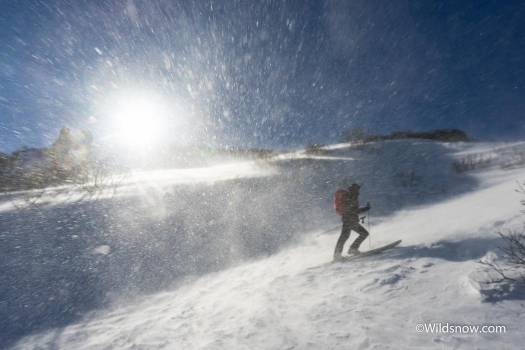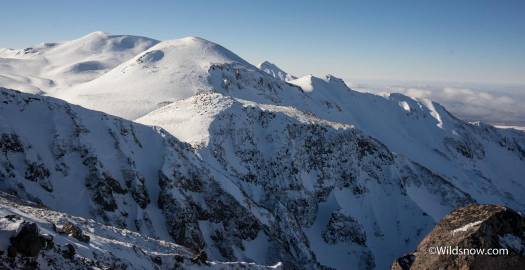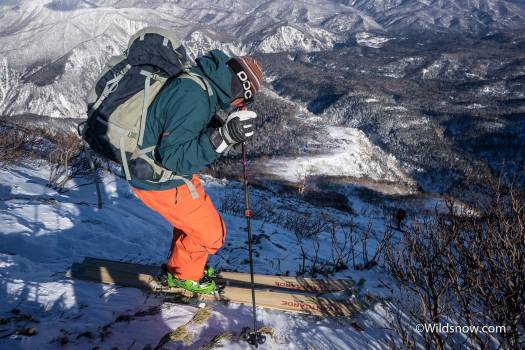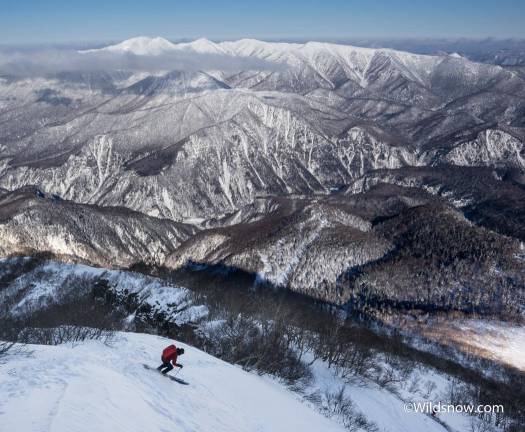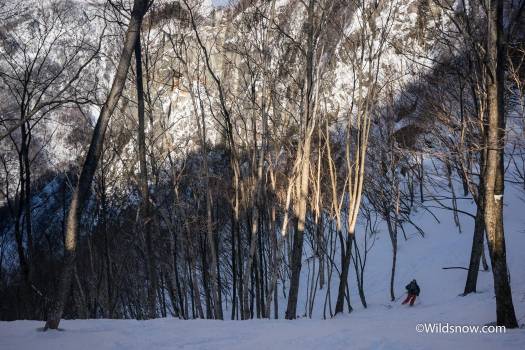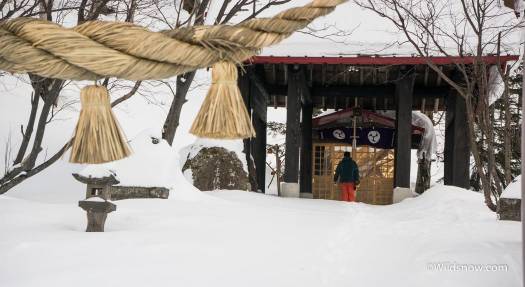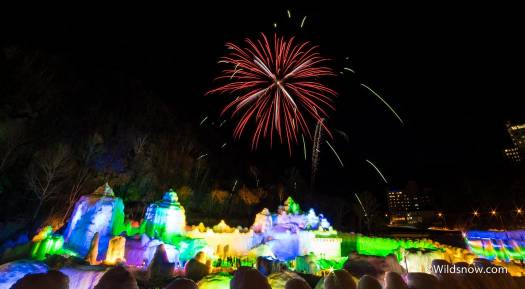After a few days staying in Asahikawa and skiing in that area, we decided to head over to Kurodake, a small village a few hours away. The village isn’t specifically targeted toward skiers, but has an aerial tram that accesses excellent ski terrain. The tram is intended mainly for sightseers, but has one “run” that goes back to the village, and lots of touring terrain above the tram.
We arrived from Asahikawa late in the morning to bluebird skies, and decided to head up the tram to explore the area. The tram was nearly deserted, perhaps due to the sub-optimal snow conditions. The place had been hit hard by wind and breakable crust persisted on most aspects. However the weather was bluebird, and summitting the small peak above the tram promised beautiful views so we decided to go for it.
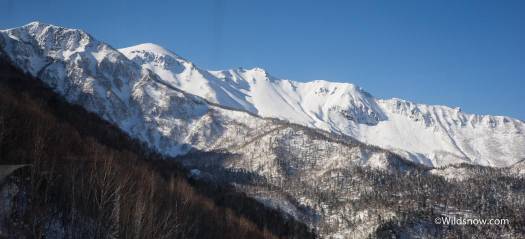
The views from the tram showed awesome alpine terrain. This place could be rad if you had the rare combo of good weather and good snow.
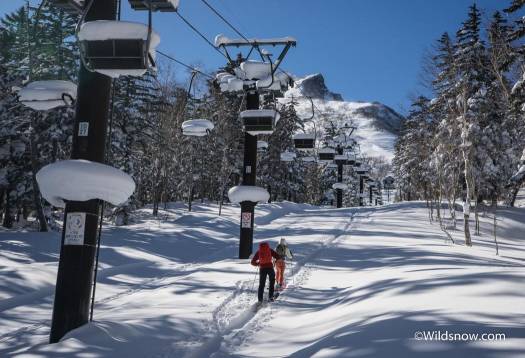
Above the tram is a short lift, that services about 100 vert of terrain. It had been shut down for at least a few weeks.
Although the peak looked close, it proved to be much farther than we thought, perhaps due to the difficult skinning conditions. After a few hours we switched to boots, and quickly made it through breakable crust and frozen bushes to the top. The views were beautiful. From the top the alpine peaks of Daisetsuzan national park could be seen. The area is popular with hiking in the summer, and there are several summer only huts in the area. Mako pointed out the one that he manages in the summer, which looked like just a short skin away. It would be pretty cool if the huts were open in the winter as well. But, our sunny, calm weather was unusual, so perhaps in a more normal winter it would be difficult to reach them much of the time.
After enjoying the views for a while, we clipped in and headed down. The top consisted of straight-lining on snow strips between bushes, but then turned into consistent breakable crust. We successfully made it down to the top of the tram (although not without a few crashes), and skied the much easier run all the way to the base.
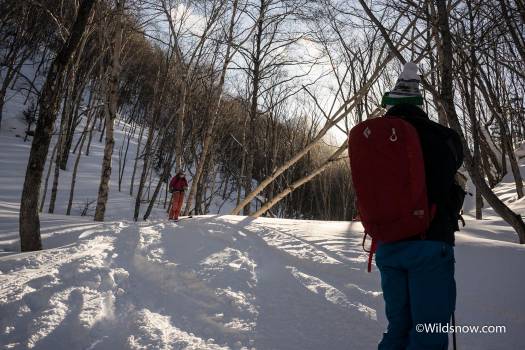
Down in the trees we even found a bit of pow, although we mostly had to stick to the narrow luge track that led to the base of the tram.
Afterwards we checked out the town’s ice festival. Although the more famous ice festival in Sapporo features intricate sculptures made from ice and snow, this one instead had a massive ice castle. The castle was created from a rough wood frame that had been sprayed with water in the frigid temperatures, creating a castle, complete with ramparts, walls, and interior rooms.
With our trip drawing to an end, and with only a few more days to ski, we decided to abandon the wind-ravaged snow above Kurodake, and head back south, toward the skiing around Sapporo.
Louie Dawson earned his Bachelor Degree in Industrial Design from Western Washington University in 2014. When he’s not skiing Mount Baker or somewhere equally as snowy, he’s thinking about new products to make ski mountaineering more fun and safe.

